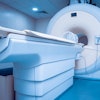Contrary to previous research, a new study has found that most musculoskeletal MRI scans obtained prior to evaluation by a hand surgeon are, in fact, useful. The data call into question prior retrospective analyses that may have been confounded by recall bias.
The study from Brown University Medical School and Rhode Island Hospital, both in Providence, also found that ordering both MRI scans and x-rays for a patient is less likely to help a hand surgeon diagnose an ailment.
Two previous retrospective studies conducted at Brown University evaluated the usefulness of MRI scans on shoulders and on feet and ankles prior to a patient seeing a specialist. Both studies found that most MRI scans were not helpful and did not positively affect patient treatment.
For the current study, the researchers, who presented their findings this month at the meeting of the American Academy of Orthopaedic Surgeons (AAOS) in Las Vegas, chose a prospective approach to the issue to eliminate the potential for recall bias.
Unexpected results
"Our hypothesis was that a majority of [MRI scans] would not be helpful, similar to the other studies, but we found different results," said lead author Curtis Henn, fourth-year medical student at Brown. "We found that 10 of the 14 [MRI scans] were helpful."
Henn collaborated with Dr. Edward Akelman, head of the hand, upper extremity, and microvascular surgery division in the department of orthopedics at Rhode Island Hospital, and Dr. Arnold-Peter Weiss, professor of orthopedics at Brown and Rhode Island Hospital.
The prospective study evaluated 396 patients over four weeks at Rhode Island Hospital. Two orthopedic hand surgeons completed a survey after every patient encounter to document the type of imaging the patient brought to the visit and any additional imaging ordered by the surgeon. The surgeons then identified which prereferral MRIs were useful and noted whether they agreed with the radiologists' read.
Fourteen of the 396 patients had a prereferral MRI. Of those 14 scans, the surgeons found 10 of the MRIs to be helpful and the radiologists' readings were accurate.
Plausible explanations
Henn cited two plausible explanations for obtaining different results than previous research. "One is that the other studies were confounded by recall bias," he said. "If you know the outcome of the patient encounter and you know the alternate diagnosis or treatment, it is easier to look back and say, 'We didn't need that MRI.' "
A second explanation could be the difference between hand and shoulder surgeries. "Hand surgery is more complicated and the number of MRIs used in the study was less than shoulder surgery," Henn said. "Some shoulder surgeons require [a patient] to get an MRI before they see them."
For the hand surgeon, MRI is particularly beneficial in presurgical planning for ailments, such as triangular fibrocartilage complex and intercarpal ligament tears, radial ulnar joint instability, and soft-tissue masses and tumors.
The second part of the study was designed to compare the utility of MR and x-ray images when results from both modalities are available.
MRI versus x-ray
Of the 14 patients with MRI scans, three patients also had x-rays. The three patients who presented with both MRIs and radiographs all had MRIs that were not useful, whereas 10 of the 11 patients with only MRI had MRI scans that proved useful.
As for the reasons for the variance, Henn said that the x-rays "identified cases that are more challenging or difficult to diagnose in the primary care or general orthopedic setting. It encouraged [physicians] to order more than one imaging modality and still they don't know what's going on. So, ultimately, it was not helpful."
Another explanation for the results could be the small number of patient samples and the fact that the study was conducted at one hospital. "It could be just one referring physician who orders both MRI and a radiograph," Henn opined. "If they don't have a diagnosis in mind, they are more likely to order a radiograph and still not know what's going on, or order an MRI and still not know."
Future research
Even though the results are preliminary, Henn said the "most valuable thing we take from this study is that when we are looking at prereferral MRI, it is important to do it in a prospective approach to eliminate recall bias."
The next step, he added, would be to study the issue for a longer period of time with a larger patient sample to compare patients who presented with an MRI and were given a certain diagnosis and those who had both an MRI and x-ray and their diagnoses. In addition, the research should follow those patients to see their outcomes and if any outcomes change.
Henn also suggested expanding future research in this area to determine if MRI is useful and if it is necessary, "because an MRI can be useful, but not necessary."
By Wayne Forrest
AuntMinnie.com staff writer
March 17, 2009
Related Reading
MR arthrography depicts tears, instability in triangular fibrocartilage complex, January 19, 2007
MRI, US far from idle for hand, wrist injuries, November 6, 2006
Low-field dedicated extremity MRI useful for assessing early rheumatoid arthritis, September 8, 2006
Copyright © 2009 AuntMinnie.com


.fFmgij6Hin.png?auto=compress%2Cformat&fit=crop&h=100&q=70&w=100)





.fFmgij6Hin.png?auto=compress%2Cformat&fit=crop&h=167&q=70&w=250)











